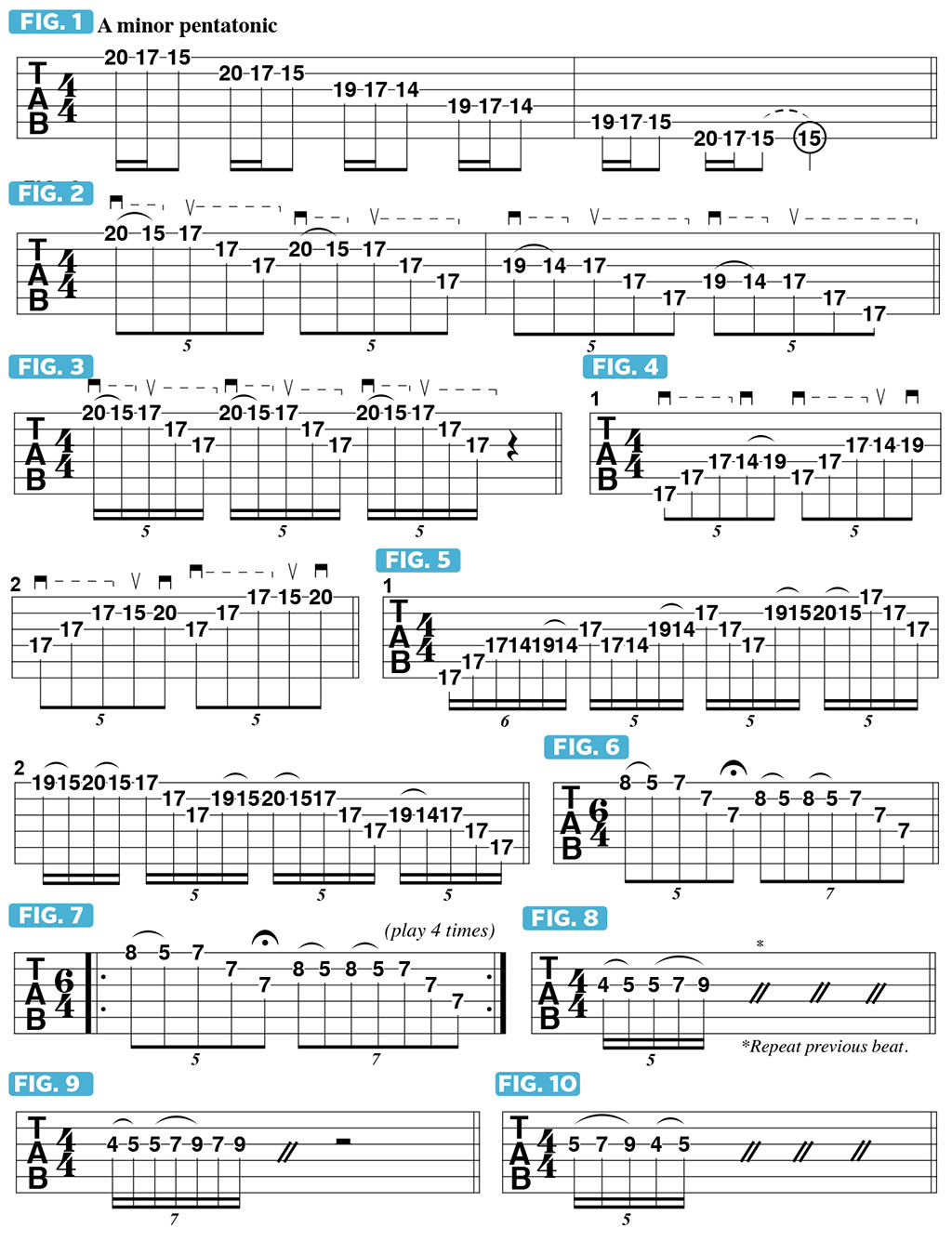Take your solos up a notch by using rhythmic note groupings to build musical phrases
Taking a mathematical approach to building solos will reinvigorate your playing
A great approach to building solo lines is to structure musical phrases from specific rhythmic syncopations and melodic shapes. A technique I love to use is to play a series of phrases that are all performed with the same pick-hand technique while changing the shape and contour of the melodic lines with my fret hand.
This way, my pick hand can go on autopilot while my fret hand is free to grab different notes, shapes and sequences. Once you have established an overall rhythmic syncopation, you can easily build on a musical idea by mathematically adding or subtracting notes, so that those syncopations and melodic shapes can be changed at will.
For example, a group of five notes can be looked at and factored as a group of two notes followed by three, or vice versa. So you can have 1-2, 1-2-3 or 1-2-3, 1-2. Each grouping has its own inherent accent pattern and feel, and you can mix them up by alternating them in a lick.
Let’s begin with a three-notes-per string pattern based on the A minor pentatonic scale (A, C, D, E, G) played way up in 15th position, as shown in FIGURE 1. Utilizing a bit of a fret-hand stretch, I’m playing the notes of the scale in a descending manner, with the last note on each beat repeated as the first note on the next beat on the next lower string.
In FIGURE 2, I’ve built a line based on groupings of five notes that descend across all of the groups of three adjacent strings. Notice that I begin each five-note group with a downstroke followed by a pull-off and then play the remaining three notes with an upstroke sweep.
When I play the consecutive notes at the 17th fret, I barre across the three strings with my middle finger but try to roll the finger from the higher to the lower strings as the pick moves across them, so that all three strings do not ring together. In FIGURE 3, the example is played quickly as quintuplets.
We can reverse the pattern and play three ascending notes followed by two. In FIGURE 4, I begin with a downstroke sweep across the bottom three strings followed by another downstroke and a hammer-on. I then switch to a different picking pattern by ending with an upstroke followed by a downstroke.
All the latest guitar news, interviews, lessons, reviews, deals and more, direct to your inbox!
As I had done with the descending pattern, the ascent moves sequentially across adjacent three-string groups.
Here’s where you can get creative and start to mix up the patterns, as shown in FIGURE 5. In this two-bar example, I freely change some of the shapes and patterns, which results in unexpected sequences.
Once you know how to play these kinds of 2 + 3 and 3 + 2 phrasing patterns, you can add another 2 or 3. In this way, a five-note group can become seven, or a 5 + 4, to get a group of nine, for example. In FIGURES 6 and 7, a group of five notes is followed by a group of seven. Practice adding numbers to the phrases, so that there will be a continuous rhythm.
Lastly, try playing patterns like these on one string, as demonstrated in FIGURES 8-10. The possibilities for creative experimentation and application are endless.
Dweezil Zappa is a brilliant guitarist and son of the legendary Frank Zappa. For the last 12 years he has toured the world performing his father’s music with Zappa Plays Zappa and other ensembles. His latest album is Confessions of a Deprived Youth (Deep Fried Youth).

